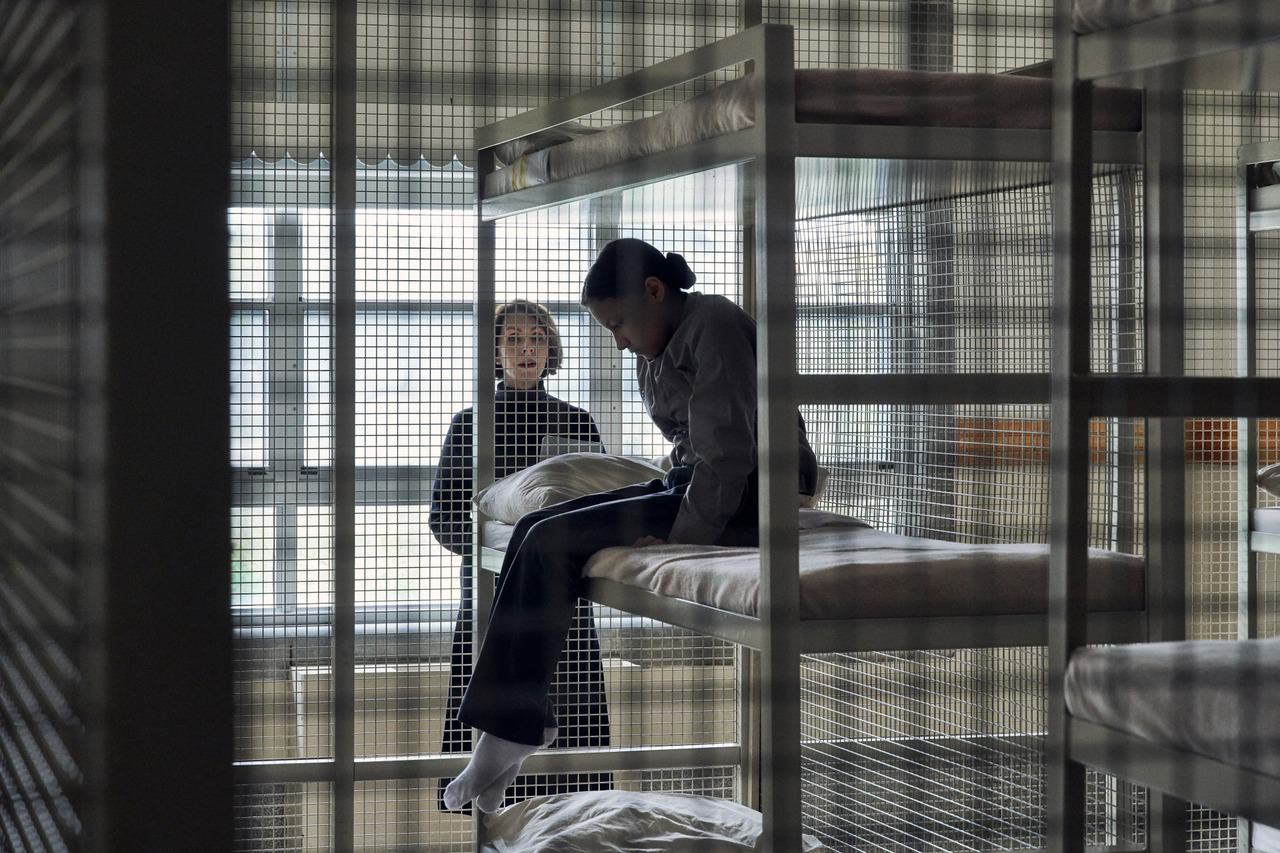
Christos Kalohoridis
MOVIE REVIEW
Night Raiders (2021)
The emotional stakes of “Night Raiders” are so high that it doesn’t matter the movie is a mash-up of “Children of Men,” “Young Ones” and “Leave No Trace.” It’s a bilingual Cree-English futuristic re-enactment of The Scoop – that is, the forcible removable of Indigenous Canadian children to residential schools where their connection to their culture was tortured out of them. (The most notorious residential school in Canada had its own electric chair.) Such tortures have been undertaken on indigenous children all around the world, including those currently happening on the American border with Mexico, and since this is a Canadian co-production with New Zealand, with Taika Waititi and his wife Chelsea Winstanley as producers, there are global points to be made. In a certain way the fact we’ve seen these miseries onscreen before is almost the point, because this shit keeps fucking happening.
But Niska (Elle-Máijá Tailfeathers, who could become the new Liam Neeson if she wanted) has done her absolute damnedest to keep it from happening to her 12-year-old daughter Waseese (Brooklyn Letexier-Hart). There has been a war, and they are on the losing side. The population is monitored by drones, which drop in M.R.E.s every day; and the children are gone, taken over the border for their education. Parents who hide their children are shot on sight. But Niska and Waseese have been living alone in the woods, hunting with slingshots, until Waseese is caught in an ancient bear trap and seriously injures her leg. That night Niska shoots down a drone, which means they must flee into the city in an attempt to avoid discovery and find medicine. While they are taken in by Roberta (Amanda Plummer), an old friend of Niska’s, they have no hope of saving Waseese’s life themselves. So Niska makes a choice.
Here writer-director Danis Goulet skips ahead a year; the scenes of Waseese in the prison school, where she is known as Esther, are so cruelly painful that the restraint is necessary. Daniel Grant’s washed-out cinematography and Michelle Child’s sound design which snaps in and out of focus are as ghastly a depiction of children’s alienation and suffering as can be bearable to watch. But the fracture of Niska’s plotline isn’t. She now has a boyfriend (Shaun Sipos), who has gotten them fake IDs that will allow them over the border and into a better life. The night before their departure, at a makeshift shrine where parents grieve their absent children, she witnesses what she thinks is an abduction. But after she regains consciousness, she learns it was a rescue. A group of Cree (which is also Niska’s tribe, though she is from a different region) have figured out where their children are held and are planning a jailbreak. Niska still wants to run away with her boyfriend, despite Ida (Gail Maurice) telling her that her assistance was foreseen in a prophecy. Niska just walks away until New Zealander Leo (Alex Tarrant) tells her Waseese is with them.
The subplot with the boyfriend is a distraction and has the unfortunate result of making Niska looks like she needs a man to tell her what to do. The main focus ought to have been the contrast between Niska and Roberta’s desperate belief that their children were in a better place and the painful knowledge of Ida and Leo as to what’s really happening. The similarity of the militarized ruin of the set design to “The Hunger Games” films should have been fought against, too. Niska is a fighter, quick to assess a situation and swift to react, despite her gentle, tender nature. The life she’s had hasn’t brutalized her, but under Roberta’s worn-out influence she has lost hope. Meeting Leo, whose foreignness enables him to move freely and therefore run weapons and food for the Cree camp, is surprisingly not a romantic awakening. Instead it’s more of a reminder for Niska that she has fiercely held beliefs she is willing to risk her life for.
The originality of the ending, which is a genuine and clever surprise, shows how cliched apocalyptic shoot-’em-ups have become. But it comes after a long sequence that should have been an emotional blitzkrieg but is just sort of dull. “Night Raiders” would have been so much stronger if it had never lost sight of Niska’s will to live and her willingness to fight for her survival. Her love for Waseese is only one of her skills, and a better movie would not have forgotten that for a second. But on the other hand, who cares how you get there, when you see a kid in a cage and immediately open the door.
Comments